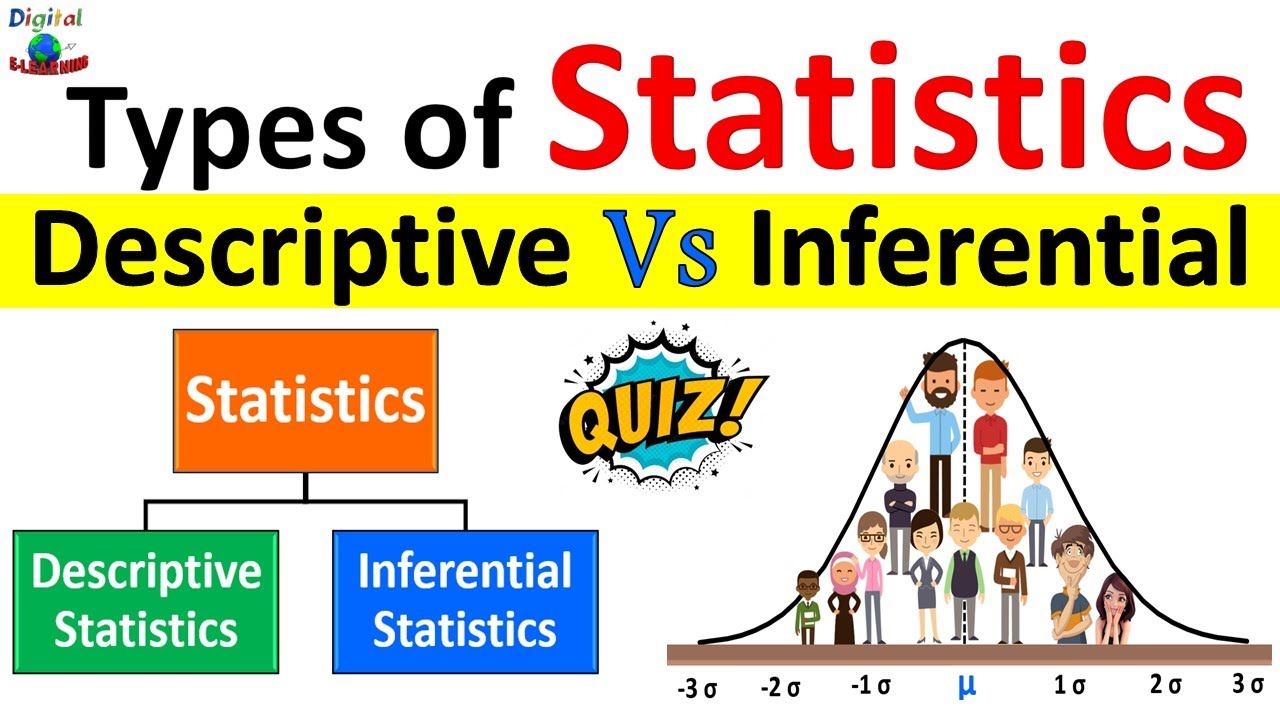Tendensi Sentral: Mean, Median, Modus
Summary
TLDRThis video provides a comprehensive introduction to central tendency in statistics, explaining its role in summarizing data sets with a single representative value. It covers three key measures: mode (most frequent value), median (middle point), and mean (average), highlighting when to use each based on the data type and distribution. Examples, such as class IQ and student grades, demonstrate how to calculate these measures. The video also explores how data distribution (normal, skewed) affects the choice of measure, with practical scenarios showing when to use the mean, median, or mode for accurate representation.
Takeaways
- 😀 Descriptive statistics focus on summarizing data from one variable, with central tendency being one of its key components.
- 😀 Central tendency refers to statistical measures that describe the center of a data set with a representative number.
- 😀 The three measures of central tendency are: Mode, Median, and Mean.
- 😀 Mode is the value that appears most frequently in a dataset and is best used for nominal or categorical data.
- 😀 Median is the middle value in a sorted dataset and is suitable for ordinal, interval, or ratio data, especially when the data is skewed.
- 😀 Mean is the average of all data points and works best for normally distributed interval or ratio data.
- 😀 The choice between Mode, Median, and Mean depends on the data type and distribution.
- 😀 When data is normally distributed, Mode, Median, and Mean are nearly equal, providing a consistent central tendency.
- 😀 In skewed distributions, the relationship between the Mode, Median, and Mean changes (e.g., for left-skewed data: Mean < Median < Mode).
- 😀 Outliers in data can significantly impact the mean, making the median a more reliable measure in such cases.
- 😀 Practical examples: Test scores (mean), personality types (mode), and income (median with outliers) highlight when to use each measure.
Q & A
What is central tendency in statistics?
-Central tendency refers to a statistical measure that describes the center or typical value of a data set, helping to summarize a large number of values with a single representative number.
What are the three measures of central tendency?
-The three measures of central tendency are the mode, median, and mean.
When is the mode used as a measure of central tendency?
-The mode is used when the data is nominal, ordinal, or biased. It identifies the value that appears most frequently in the dataset.
What is the median, and when do we use it?
-The median is the middle value when data is sorted. It is used when the data type is ordinal, interval, or ratio, but is not normally distributed or is skewed.
What is the mean, and when should it be used?
-The mean, or average, is the total of all values divided by the number of data points. It should be used when the data is normally distributed and the data type is interval or ratio.
How is the mode calculated in a given dataset?
-The mode is calculated by identifying the value that appears most frequently in the dataset. If a value appears more than others, it is the mode.
Why is the median preferred over the mean when there are outliers in the data?
-The median is preferred when there are outliers because it is less influenced by extreme values, unlike the mean, which can be distorted by large outliers.
What happens to the values of mean, median, and mode in a skewed distribution?
-In a skewed distribution, the mean, median, and mode are not equal. If the data is skewed to the left, the mean is lower than the median, which is also lower than the mode. If the data is skewed to the right, the mean is higher than both the median and mode.
When is the mean not a reliable measure of central tendency?
-The mean is not reliable when the data is not normally distributed or contains outliers, as it can give a misleading representation of the data.
Can we always use the mean, median, or mode? What factors influence this decision?
-The choice of whether to use the mean, median, or mode depends on the type of data and the distribution. For nominal data, only the mode can be used. For ordinal data, either the mode or median can be used. For interval or ratio data, all three measures are possible, but the distribution type (normal or skewed) should guide the decision.
Outlines

Этот раздел доступен только подписчикам платных тарифов. Пожалуйста, перейдите на платный тариф для доступа.
Перейти на платный тарифMindmap

Этот раздел доступен только подписчикам платных тарифов. Пожалуйста, перейдите на платный тариф для доступа.
Перейти на платный тарифKeywords

Этот раздел доступен только подписчикам платных тарифов. Пожалуйста, перейдите на платный тариф для доступа.
Перейти на платный тарифHighlights

Этот раздел доступен только подписчикам платных тарифов. Пожалуйста, перейдите на платный тариф для доступа.
Перейти на платный тарифTranscripts

Этот раздел доступен только подписчикам платных тарифов. Пожалуйста, перейдите на платный тариф для доступа.
Перейти на платный тарифПосмотреть больше похожих видео

What is Descriptive Statistics? A Beginner's Guide to Descriptive Statistics!

Statistika 1 ~ Ukuran Pemusatan Data (Mean/Rata-Rata, Median, Modus) ~ Materi PJJ Kelas VIII / 8 SMP

Average | Arithmetic Mean Class 11 | Average Class 11 | Average for Ungrouped Data.

Statistik Deskriptif

Descriptive Statistics vs Inferential Statistics | Measure of Central Tendency | Types of Statistics

KULIAH STATISTIK (5) - UKURAN PEMUSATAN DATA
5.0 / 5 (0 votes)
